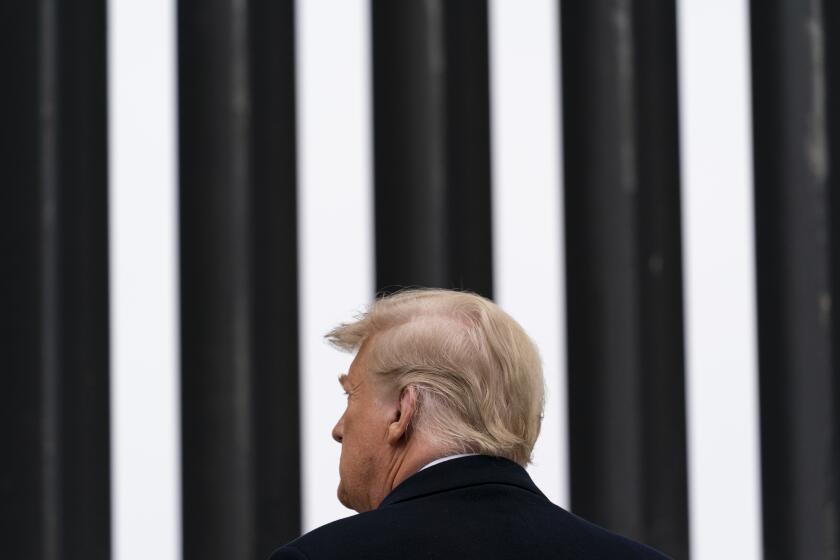Op-Ed: Increased border security is why so many ‘Dreamers’ are here in the first place
- Share via
President Trump has indicated for months that he is willing to resolve the status of nearly 800,000 so-called Dreamers in exchange for funds to build his “beautiful wall” and to increase border security.
Although funding for Trump’s wall remains a hotly debated topic, there does seem to be consensus that increased border security should be a condition for fixing DACA.
But this view ignores history. Increased border security is why there are so many Dreamers in the United States in the first place.
A few decades ago, the border was much more permeable. Thousands of migrants were able to enter the country by going through official border checkpoints.
The Immigration and Naturalization Service reported in 1975 that more than 20,000 Mexicans tried to enter through these checkpoints by making false claims of citizenship, and that 16,277 of them had presented fraudulent credentials. Migrants were also able to enter into the country by wading through the Rio Grande or walking through valleys and hills.
Once men realized that circular migration was no longer an option...they encouraged their wives and children to come with them.
Approximately 85% of all undocumented migrants entered the U.S. through three narrow strips along the 2,000-mile border: the San Diego sector, the El Paso sector and the San Antonio sector, which includes Laredo.
In the San Diego sector, migrant smugglers would often get small groups of migrants through the tattered remnants of a border fence onto Otay Mesa, where trucks or cars picked them up and drove them farther north. Other migrants were able to enter illegally through the Texas sectors by wading through the Rio Grande.
Though crossing the border was risky enough that women and children tended to avoid it, migrant men would cross it regularly. Rather than settling permanently in the U.S., Mexican men would engage in circular migration. They would head to “el norte” to make money, work there for limited periods of time, return to Mexico to be with their families, then head north again when they needed work. Their wives and children would remain in Mexico, waiting for the men to send remittances and return home.
Mexican families actually preferred to raise their children in Mexico rather than in the U.S. They believed that many people in the U.S. had few family values, making it an unfit place to raise children. Many Mexicans worried that American citizens often lived together without getting married and grew up addicted to drugs and alcohol. These views reinforced the pattern of circular migration whereby men went to work in the U.S. and then returned to Mexico to be with their families.
This pattern changed in 1986. That year, the U.S. Congress passed the Immigration Reform and Control Act, which further fortified the border and made it more difficult for migrants to travel back and forth between Mexico and the United States.
To cross the border illegally, migrants had to pay much higher fees to their smugglers. Injuries and deaths rose rapidly. In light of these new hardships, many migrant men concluded that they could no longer engage in the circular migration their parents had. Instead, they decided to settle permanently in the U.S. and dared not return to Mexico for fear that they would not be able to get back when they needed work.
Once men realized that circular migration was no longer an option, and that they would have to settle in the U.S., they encouraged their wives and children to come north with them. It was the only way for children to grow up with their fathers and for spouses to be together.
Since crossing the border was even more hazardous for women and minors, once they migrated, they avoided going back. This meant that thousands of children grew up without papers in the U.S., but without knowing Mexico.
It’s these children who are now Dreamers, demanding the right to stay in the U.S. It would be something beyond irony to give them this right only in exchange for further fortifying the border. This kind of “security” is why they grew up here.
Ana Minian is a professor of history at Stanford University.
Follow the Opinion section on Twitter @latimesopinion or Facebook
More to Read
A cure for the common opinion
Get thought-provoking perspectives with our weekly newsletter.
You may occasionally receive promotional content from the Los Angeles Times.









